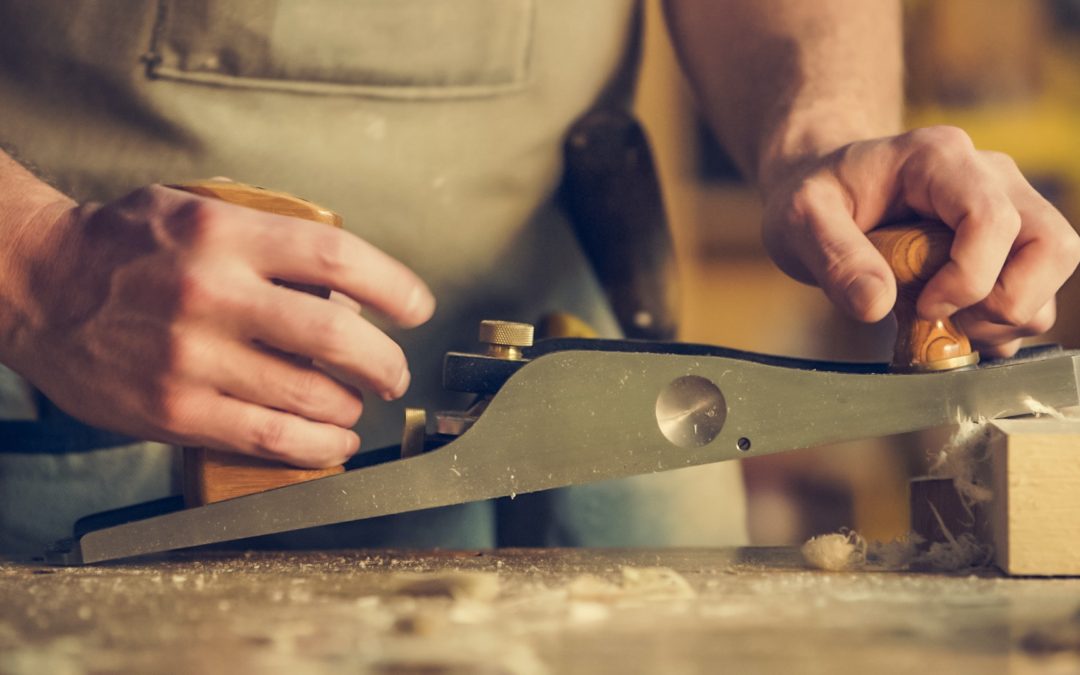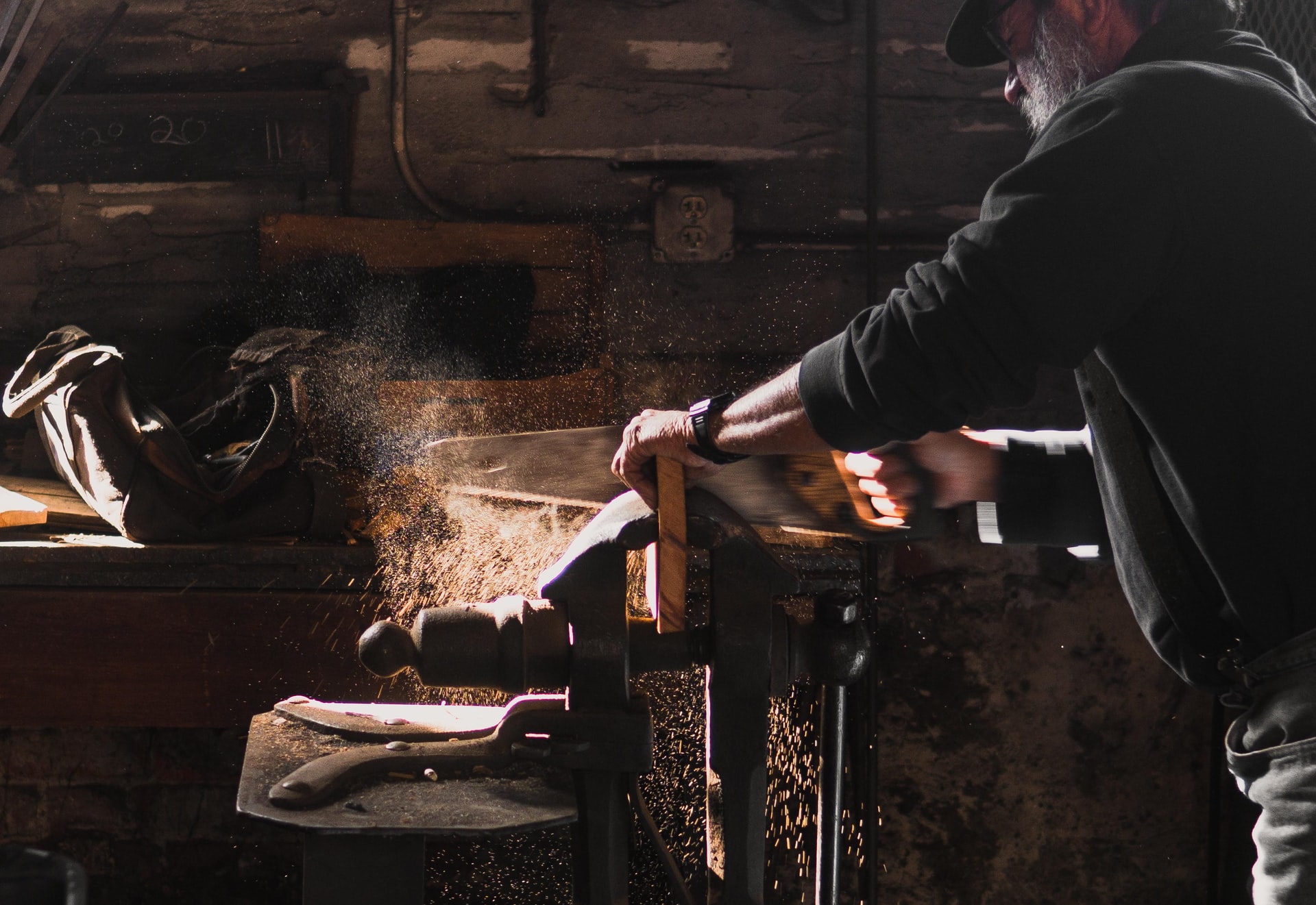Working with wood can be a fulfilling craft that takes a lifetime to master. By being safe in the shop, you can hone your skills and expand your knowledge for years to come. In this article, we’ll examine common safety hazards for both the home shop and the workplace, and what can be done to reduce the risks.
Attention & Attire
Inattention, inadequate training and lack of adherence to general safety guidelines can contribute to many instances of injury and damage in the woodworking shop. Workers should be rested, awake, sober, and focused on the job at hand; distractions, horseplay, fatigue and intoxication can all have disastrous results.
Wear shoes with closed toes and heels; long hair or beards, jewelry, loose clothing and headphones should all be secured. Have all tools at hand, and the workstation clear. Wear hearing protection, safety glasses, and gloves or a respirator where appropriate. Check the guards and safety features on each piece of equipment every time before starting.
When learning about and using a tool, keep in mind: How does it move? Are there places where it’s possible to snag, catch, nip or pinch? What are the guards in place to protect against? Use push sticks and push blocks for feeding short or small pieces of stock into your machinery to keep hands and clothing safely clear. Keep eyes on the task and hands away from the line of cut or point of contact.
Electricity
Unless working exclusively with manual tools, many critical parts of the woodworking shop are powered by electricity. Inspect all power cords regularly and replace any that show signs of damage.
Take care to route cords away from walkways to avoid tangles or falls, don’t overload surge protectors and be sure to use an extension cord rated for your shop environment. Always turn off and unplug any equipment being cleaned or serviced.
Machine Malfunction
Tools are safest when clean, properly maintained and used correctly. Thoroughly read any manuals accompanying your equipment, and be sure to have them serviced and parts replaced at the recommended intervals.
Bladed tools are particularly unpredictable when dull; a sharper blade is a safer one. Use a brush or stick to remove debris or dust from a bladed tool, and never attempt to clean or clear a jammed tool while it is running.
Always follow manufacturer directions for setup, use, cleanup and storage to avoid injury or damage to your tools; consider taking a class or consulting an expert for unfamiliar equipment. If safety guards are in place, do not attempt to remove or defeat them; consult the manufacturer if machine guards are malfunctioning or not present.
Noise & Vibration
Hearing is damaged by prolonged exposure to sounds over 85 decibels; comparable to the noise of a busy highway, this level is lower than the volume of the average drill press, drum sander or shop vacuum.
Always wear hearing protection when using loud tools and while working in a noisy environment; damaging levels of sound are not painful or even uncomfortable to most people in small amounts, allowing cumulative hearing loss to go unnoticed until it’s too late. Beyond being physically damaging, distracting noises in the shop can be their own source of trouble to the focused craftsperson using heavy machinery and should be avoided wherever possible.
Similarly, unnecessary vibration can result in inaccurate cuts or finishing, increased fatigue or distraction, and more frequent need for tool maintenance. Minimize vibration by ensuring that mounted tools are installed properly and table-based tools are on a flat, level surface without touching each other or the walls; consider vibration-dampening materials for surfaces that resonate or echo. Maintain proper lubrication, bolt torque and belt tension on all equipment for smoothest possible operation.
Dust & Debris
Eye protection should be worn at all times when working with wood or chemicals; opt for as much side coverage as possible to prevent injury from splashing stain, dropped buckets or unexpected splinters. Invest in goggles or a face shield for projects with noxious fumes or fine debris.
Dust can have a negative effect on air quality; sawdust is a Group A carcinogen according to the International Agency for Research on Cancer (IARC). Wear a respirator when using equipment that creates dust. Make a plan for adequate ventilation; opening doors or windows and vacuuming the work area regularly will make the air safer and more comfortable to work in. Sawdust in particular should be disposed of regularly in order to minimize the next serious risk: fire.
Fire
Fire can be one of the deadliest hazards to the woodworking shop, but prevention is possible with regular effort and attention. The most important step is to take action against spontaneous combustion: the biggest culprits are often rags, solvents and sawdust.
- First, spread rags used with solvents flat to dry away from flammable materials, or dispose of them in a covered bucket full of water.
- Secondly, control your dust: use equipment with bags to collect sawdust where possible and vacuum the area regularly during large projects. If the belt sander has a bag, empty it when it becomes half full. Never overfill bags or leave bags of sawdust in the car, garage, job site or shop.
- Finally, store solvents, stains and other chemicals in their original containers, in an area that is cleared of clutter and away from rags. Clean up spills quickly and thoroughly.
By keeping these guidelines in mind, a safe and healthy woodworking shop can be reasonably obtained and easily kept by any craftsman with a bit of regular attention.


